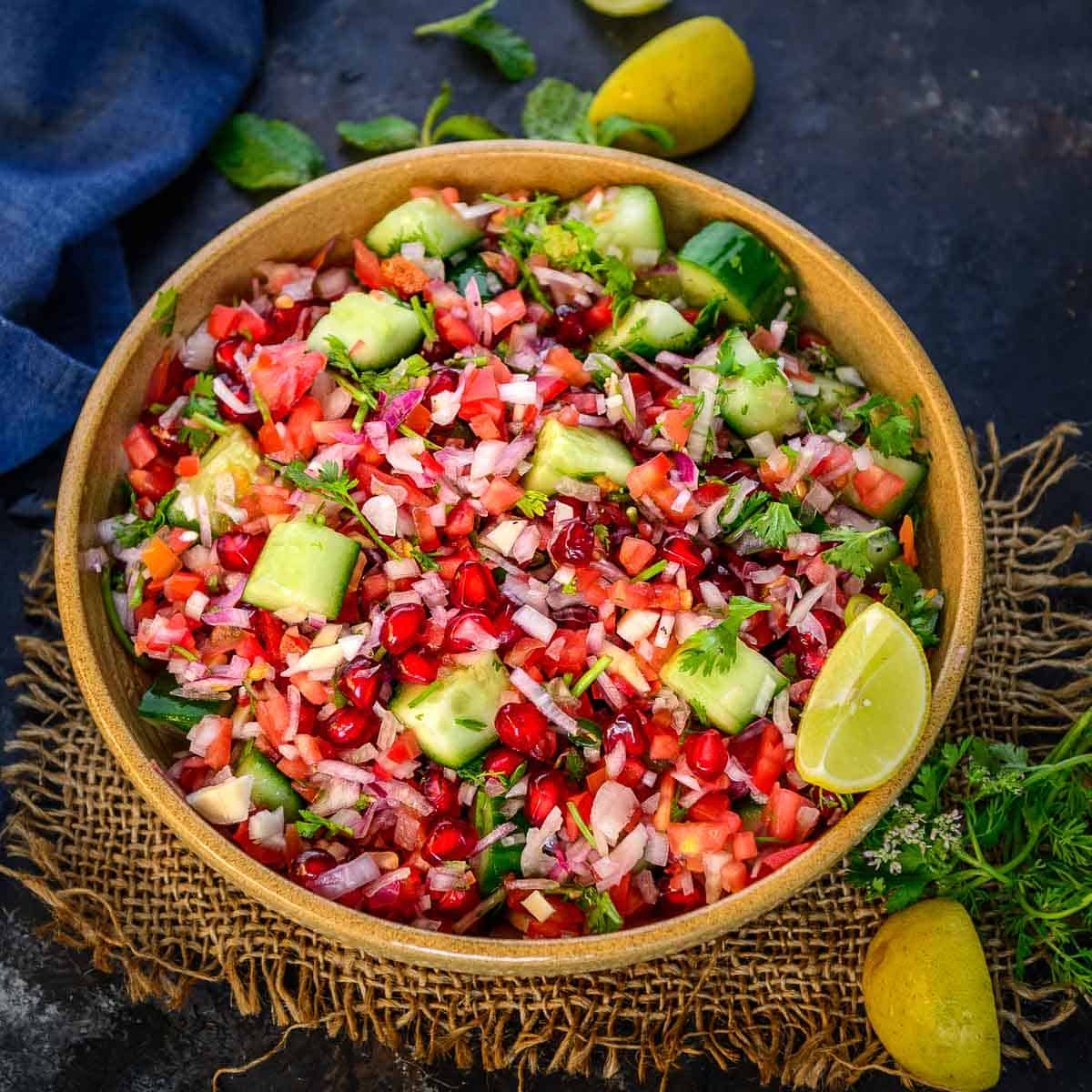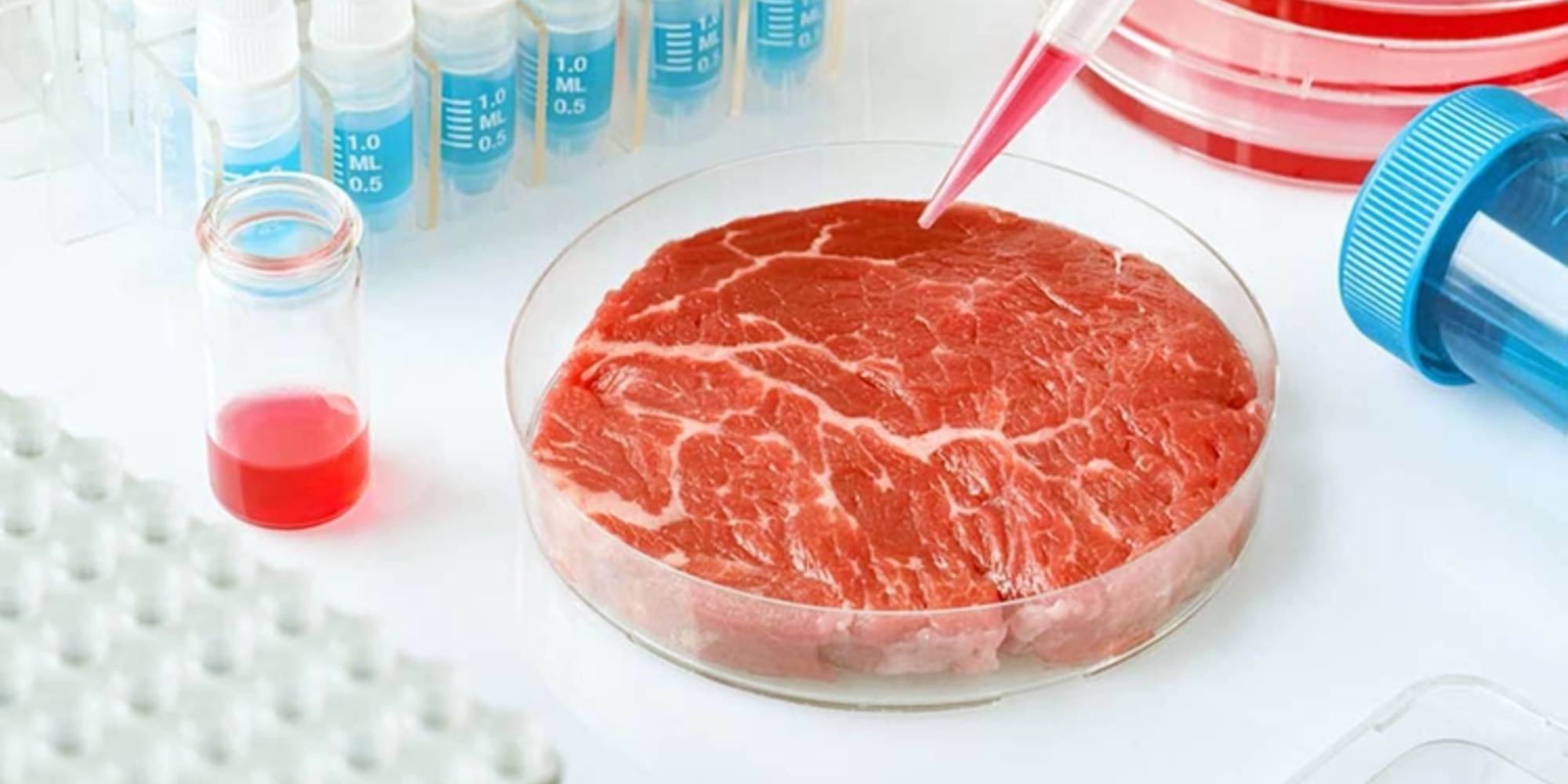Cold nights and warm afternoons, sprouting trees and the sweet scent of blooming flowers, animals returning from their hiatus and the euphony of chirping birds, all of this marks the setting in of the spring. It seems as if the earth has dressed itself up in a thick verdure blanket to exhibit its joie de vivre to celebrate the arrival of the spring season and to mark the end of the grey winter days. This is a sight that is cherished by all, especially by those who have been longing the light summer salads on their lunch tables after early morning walks to the farmer’s market to get their hands on fresh vegetables.

Kachumbar is a refreshing salad typically enjoyed in the spring and summer. It is made with the finely chopped cucumbers, tomatoes, shallots, fresh coriander and mint leaves tossed together with yoghurt and sprinkled with some Himalayan black salt, black pepper powder, and roasted ground cumin, and is often served with the warm pita bread. This joy of eating the fresh and healthy salad should compel one to assay the fruition of cucumbers, tomatoes, etc. from tiny buds blooming into flowers and eventually turning into a vegetable or fruit. How can a seed become a sapling and then a plant from the lifeless soil in just a few months? After having been grown in the same soil and receiving similar nourishments how are various vegetables or fruits so distinct in flavor and texture from each other? How come is it possible that the sun which shines everyday renders different nutrition and taste to different plants? Science tells us that every seed is composed of three components viz. the embryo, the endosperm, and the seed-coat, and that they absorb the exact amount of water as much as they need to soften the coat and break open the soil. Then, despite being essentially same in their basic structure, how and why do plants vary from each other in its appearance, product, and taste?
On the other hand, the best contrast to the farm grown food is the synthetic food which is making headlines nowadays. Synthetic food is a sort of replica of the farm grown food which scientists make artificially by using the “plant-based” genes[i]. In order to make it, scientists first need to identify the gene sequences of proteins that give a particular food its characteristics. A plant-based food manufacturer, for example, may seek to identify the protein that gives cheese its ‘stretchy’ gooeyness. Once the gene sequence for the desired trait is identified, it is recreated synthetically in a lab, inserted into a living organism such as a bacterial cell which then like a miniature factory proceeds to make copies of the desired protein. The artificially grown protein can then be used as a food ingredient in the manufacturing of the plant-based food such as “meatless” chicken strips or plant-based cheese for vegans. It is important to remember that scientists have to first copy the recipe (genes) of a particular plant in order to make food from it synthetically. Having said that, this is not an easy task. Growing synthetic food is an intensive job which requires a massive effort and complete dedication of a huge team of experts. The food also needs to be clinically tested before it is declared fit for consumption. All of this process undoubtedly makes it extremely pricey.
If one were to reflect upon the kachumbar that is right in front of him and wonder how all vegetables that happen to be in his bowl together make such a delicious meal then he must surely wonder how can a tasteless, lifeless soil grow such flavorful and aromatic vegetables simply by using the energy of the sun and minerals from water? And, why is it so difficult to replicate these flavors in a lab? If it is the seed carrying the genetic information that is required for the plant to grow exactly the same way regardless of where it is sown in different parts of the world then who gave the seed those genes and traits in the first place? In fact, genes are like the recipes in a cookbook listing the ingredients required to form plants or trees. Just as a deliciously cooked meal cannot be attributed to the recipes in the cookbook without having someone cook it with intention, power, conscience, and intelligence, a seed cannot come to life with that inbuilt recipe (genes) only without having someone willing to bring it to life – someone who has power, mercy, and wisdom unlike any other, and someone who nurtures it ceaselessly for it to become a plant and produce fruits and vegetables. Just like a scientist is using the genes in his test lab to make the plant-based synthetic food, the seed must then have a Creator too who created the genes for the first time.

The success of the synthetic food proves that scientists must be highly knowledgeable because they are able to produce through replication something which is similar to its original. Then what sort of knowledge should the maker of a seed possess who has designed its genetic information? While synthetic food needs to be remade manually with the same efforts on every demand, the plant on the other hand will continue to grow and provide endless supply of vegetables seasonally every year and that too for free until it wears out and dies. The Creator of the seed must then be the sole active agent behind all these phenomena and the One who must be All-Knowledgeable, All-Wise, All- Powerful, and Most Generous because only the One who has knowledge of the hidden and the apparent and has power to make it happen and is so generous to endlessly provide sustenance to all His creatures for free can make it happen flawlessly with the correct precision and timing.
So, the next time you are having kachumbar or any other farm-grown food, think of it as a gift from God. Be grateful to Him because He made all that happen only to put those vegetables in your bowl as if they were brought to life only for you, as if the arrival of the spring season was planned for no one but you. This reflective thinking should be able to instill in you a sense of gratitude towards the One who is the actual force behind all of this. It should make you realize that whatever you eat or own is actually a gift from God because He loves you endlessly and unconditionally, and in return all He asks from you is the submission of your will to none but Him alone, and to be kind and compassionate to all His creatures. The simple tale of the kachumbar salad thus leaves you with the realization of all these phenomena only to make you more grateful to God and humane to your fellow-creatures.
[i] Meg Wilcox, Why genetically engineered foods have some scientists nervous about the future? (May 14, 2019, 1:24 pm). Retrieved from URL https://www.eater.com/2019/5/14/18623258/impossible-foods-synthetic-lab-grown-meat-science